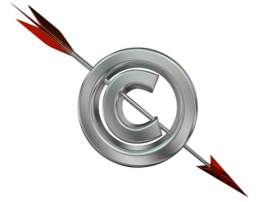
Intellectual Property and Communications Omnibus Reform Act 1999

The Intellectual Property and Communications Omnibus Reform Act was passed in 1999 to make several changes for the protection of intellectual property rights in the United States. It was proposed as an amendment to the U.S. Patent Act of 1952, the alteration of which had long been a goal for legislators and legal professionals. To these amendments were added further intellectual property rights-related provisions on the misuse of Internet domain names via the practice of "cybersquatting" and television watching via satellite and in rural areas, with the entire intellectual property rights act being placed in budgetary legislation. In this form, the law was approved by Congress on November 19, 1999.
The law was signed by President Clinton ten days later. In a year from that date all of its intellectual property rights changes had gone completely into effect. The Intellectual Property and Communications Omnibus Reform Act is referred to as Public Law 106 - 113. Observers of the intellectual property rights field identify seven major subjects for reform in the Intellectual Property and Communications Omnibus Reform Act, to which assorted amendments can also be considered.
The first major intellectual property rights issue addressed by the legislation is that of "invention promotion services," as can be found in Section 197 of Article 35 of the United States Code. Such businesses exist for the sake of assisting would-be inventors. This help may be given toward the initial step of creating the invention, or it may come at the later point of the placing of the invention on the market.
In any event, concerns grew upon around the irregular nature of the average client-business relationship in such dealings, which meant that it was predominantly individuals without professional expertise in the technology field who went to such businesses.
In the interests of providing for the intellectual property rights of the customers of such businesses, however misguided such a relationship might be considered, the Intellectual Property and Communications Omnibus Reform Act made disclosure statements mandatory for invention promotion services. It also gave customers the right to take legal action against service providers who attempted to abuse their intellectual property rights. These new avenues for legal defense took effect on January 28, 2000.
The second major alteration to law on intellectual property rights took effect on December 29, 1999 and addressed the required payments for filing an initial patent registration application and the later renewal application form and the first maintenance for a patent registration. To this end, it changed the language in Section 41 (a) of Article 35 of the United States Code.
The third major change was placed in the United States Code in Article 35, Section 173. After November 29, 1999, it could be used in intellectual property rights infringement cases. It made the so-called "first inventor" or "prior user" argument an acceptable answer to legal challenges as to patent originality. The existence of a first inventor can be determined, according to this provision, when the invention had been first "reduced to practice," in the language of patent law, at least a year before the patent registration application had been made.
The fourth major change was effected in alteration to the language in Sections 132 and 154(b) of Article 35 of the United States Code and is referred to as the "patent term guarantee." This guarantee is enacted by allowing for fixed increases to the "term of protection" for the patent holder in the event that the registration of the patent was delayed without the patent holder having been at fault. If the patent application was at fault in any way during the application process, then this option will be discounted. If it is found, however, that the delays were caused by actions of the United States Patent and Trademark Office
The sixth major change took effect on the same day as the previous provision. It was enacted in Sections 308 to 311 of Article 35 of the United States Code. It extended to applicants the option of inter partes actions for the sake of requested re-examinations of patent applications which had been previously rejected by the United States Patent and Trademark Office (USPTO).
In such procedures, the office would accept submissions from interested parties. It would also allow for three months for the purpose of making a good judgment as to the merits of the case for reapplication. When a request for inter partes proceedings to take place is submitted, it must indicate whose "real interest" is at stake in the request.
The seventh major change concerned the organization of the United States Patent and Trademark Office, which had been altered in its structure and procedures by March 29, 2000. Before the passage of the Intellectual Property and Communications Omnibus Reform Act, the USPTO was referred to as an office of the Department of Commerce, whereas afterward it was designated, as it is currently considered, an agency of that branch of government.
The Office's two roles in terms of patents and trademarks were separated more firmly than before by the creation of two distinct offices of commissioners to deal with the two subjects. The provision also mandated that the USPTO create Public Advisory Committees in order to give oversight of the USPTO's functions. Contact an intellectual property lawyer to review your case.
NEXT: Significant Legislation in Patent Law




















